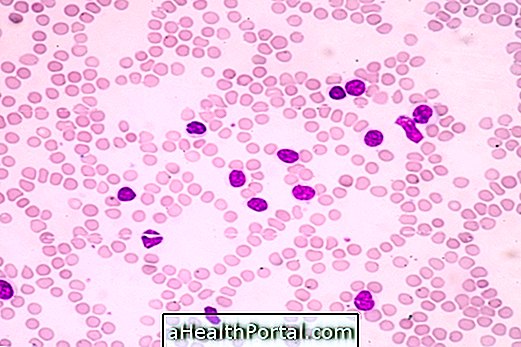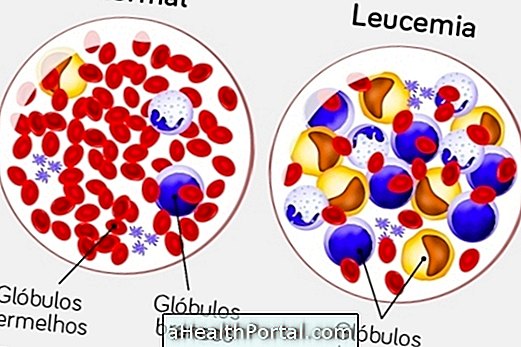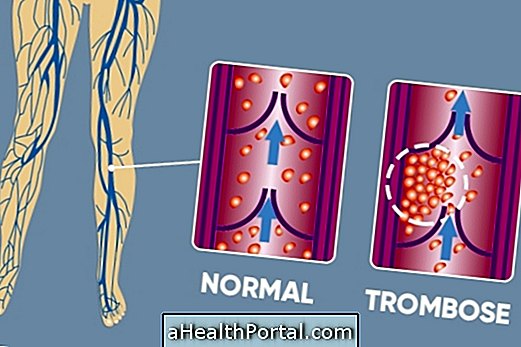Chronic Lymphocytic Leukemia, also known as CLL, is a type of leukemia characterized by an increase in the amount of mature lymphocytes in the peripheral blood. Learn more about Lymphoid Leukemia.
CLL is usually diagnosed in older people, usually as young as 65, because the disease progressively develops, with symptoms usually being noticed when the disease is already at a more advanced stage. Because of delayed onset of symptoms, the disease is usually identified during routine blood tests, especially a blood count, in which lymphocytosis can be identified.
The cause of this type of leukemia is still not well established, but it is believed to be due to prolonged exposure to chemical agents. In addition, history of LLC in the family can increase the chances of the person developing the disease.

Symptoms of LLC
CLL develops over the course of months or years, so symptoms gradually develop, and the disease is identified when leukemia is already at a later stage. The symptoms indicative of CLL are:
- Increased lymph nodes and lymph nodes;
- Fatigue;
- Spleen enlargement, also called splenomegaly;
- Hepatomegaly, which is enlarged liver;
- Recurrent skin, urine, and lung infections;
- Weight loss.
Since the disease does not present symptoms in its initial phase, CLL can be identified after routine exams, in which the increase in the number of lymphocytes and leukocytes can be checked on the blood count.
How is the diagnosis made?
The diagnosis of Chronic Lymphoid Leukemia is made from the analysis of the blood cells through the result of the hemogram. To perform the hemogram it is necessary to collect a sample of blood that must be sent to the laboratory for analysis. Find out what it is for and how to interpret the blood count.
In the CLL, it is possible to identify leukocytosis, generally above 25000 cells / mm 3 of blood, and persistent lymphocytosis, usually above 5, 000 lymphocytes / mm 3 of blood. In addition, some patients have anemia and thrombocytopenia, which is the decrease in the amount of platelets in the blood. See the reference values for the leukogram.
Although they are mature, the lymphocytes present in the peripheral blood are small and fragile and, at the time of making the smear, can rupture and give rise to the nuclear shadows, also called shadows of Gumprecht, which can also be considered as characteristic for close the diagnosis.
Although the blood count is sufficient to complete the diagnosis of chronic lymphocytic leukemia, it is necessary to perform immunophenotyping tests to identify the presence of markers that confirm that it is a leukemia related to the proliferation of type B lymphocytes and that it is chronic. Immunophenotyping is considered the gold standard of identification not only of CLL but also of other types of leukemia. Check out the guide for leukemia.
The myelogram, which corresponds to the analysis of the cells of the bone marrow, is not necessary to confirm the diagnosis of the disease, however it can be asked to verify the evolution, standard of infiltration of the lymphocytes and to define the prognosis. Understand how the myelogram is made.
Treatment of LLC
The treatment of CLL is done according to the stage of the disease:
- Low risk: in which only leukocytosis and lymphocytosis are identified, without any other symptoms. Thus, the doctor accompanies the patient without having to perform the treatment;
- Intermediate risk: in which lymphocytosis is verified, enlargement of the ganglia and hepato or splenomegaly, being necessary medical monitoring to verify the evolution of the disease and treatment with chemo or radiotherapy;
- High risk: in which characteristic symptoms of CLL are identified in addition to anemia and thrombocytopenia, and treatment should be started immediately. The most recommended treatment in this case is bone marrow transplantation, and it is also necessary to perform chemo and radiotherapy.
Once the increase in lymphocytes in the peripheral blood has been identified, it is important that the physician assess the general condition of the patient so that the diagnosis of CLL is confirmed and that treatment can be started and disease progression prevented.
























